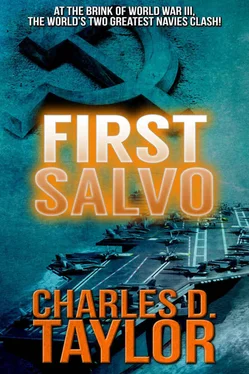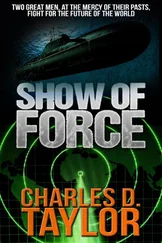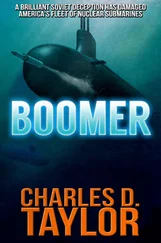One of the other COs stood up to ask Pratt’s staff man a question. “Just what does this EMP thing mean now from a strategic aspect? I mean we all know what it does technically, but they weren’t expected to go for anything like that this early. Does this mean they’ll set one off over us too?”
“They don’t have to set off another right away,” came the answer. “All of us use the same satellites, whether it’s Saratoga or Kennedy or NATO headquarters.” He shrugged his shoulders. “Washington anticipated something like this could happen, and they’ve got some more recon satellites perched at Vandenburg right now. For all we know, they may already have launched. On the other hand, the Russians also launched some maneuverable killer satellites yesterday. We send one up; they go after it. If they can’t catch up to ours, they launch another ASAT; we send up our F-15s to fire antisatellite missiles at their antisatellite satellites…” He shrugged again, to Nelson’s amusement. “What we do is we go back to doing the same thing we did at Okinawa forty years ago — radar pickets. This time it’s Hawkeye aircraft and guided-missile frigates, and they’re facing the same threat — a cruise missile is just like a kamikaze.”
Another staff officer appeared in the back of the briefing room, whirling a finger in the air to indicate “speed it up.” It would be hours before their own group was attacked, but Pratt’s plan was to disperse the formation even farther in case of nuclear attack. Pratt then intended to launch his own attack.
He had asked Wendell Nelson to impress the role of submarines on both Tactical Action Officers and captains. Military use of the waters beneath the surface had changed radically since World War Two, the last time subs had proved their worth under actual wartime conditions. In those days, a submarine was actually an air-breathing creature, able to submerge only for short periods of time. Now they were truly submersibles, capable of navigating the strange subsurface world for extended periods. A true silent service, they traded in stealth and surprise. Their preferred environment was the open ocean. Effectiveness within the straits and narrows of the Mediterranean depended completely on their individual performance. Because subs from both sides were forced to pass through straits to gain access to the Med, the initial element for achieving success was to sever contact with the inevitable shadows that tracked them. The submarines would present a challenge when the confusion of combat released them.
The reaction of the COs to Wendell Nelson was markedly different than the previous day. He was no longer an upstart — he was accepted as a full four-stripe captain in the forefront of radical antisubmarine tactics, and the traditional white attitude had become colorblind in the face of the Soviet threat. When they left, each commanding officer had access to antisubmarine tactics never before used. They felt they now had an even chance against Soviet numbers.
As they waited on the stern of Yorktown to be heloed back to their ships, the action reports from Saratoga filtered in. The second Soviet strike had been as bad as the first. Three more tiny frigates sunk, two Halsey-class destroyers badly damaged, one sinking, a guided-missile cruiser gone, Yorktown ’s sister ship, Essex , in danger of sinking, and Saratoga had been hit four more times. Large deck carriers were supposed to be able to survive four cruise missiles — she had taken seven and was still afloat. Her flight deck was buckled and in shambles. She was dead in the water, engine rooms flooded, fires ravaging much of the inner hull.
Pratt announced later over the main radio net of his battle group that when Saratoga ’s commanding officer asked for volunteers to try to keep her afloat, no able man would leave her.
The legend of the Battle of the Mediterranean was growing.
Russian reconnaissance satellites over the Mediterranean suffered the same ill effects from the nuclear blast as the Americans’. That was accepted by the Soviets. But timing was also to Soviet advantage, for they instituted a new series of launches from deep in the Soviet Union at Tyuratum, scheduled to achieve orbit after the old ones were rendered ineffective. Launches from Vandenburg Air Force Base soon followed. U.S. launch vehicles had been stockpiled for such an event; replacement recon packages were ready on the launch pads.
Anticipating the use of killer satellites was a specially trained squadron of Air Force F-15s armed with two-stage, warhead-carrying rockets. It was not difficult for the engineers in the United States to determine which were the killer satellites, and once identified, it was up to the F-15s to climb to maximum altitude and fire their rockets into space. In the vicinity of its target, each rocket could maneuver with tiny thrusters to achieve lock-on. At 17,000 plus mph, they disintegrated the Russian weapons.
The Soviet ASATs were actually orbiting satellites — but with one difference. They could maneuver in space, placing themselves in proximity with their target. Once in killing range, explosive charges propelled metal balls in the direction of their targets — which would be unable to maneuver. The outcome was much like the grape-shot used by sailing ships two hundred years before. Everything in its path was destroyed.
Unlike the action on the surface of the Mediterranean, the war in space was not initially harmful to human beings. Once the computers took over, it was artificial intelligence versus artificial intelligence. The intent of both sides was to deny the enemy the use of intelligence and communications at the most critical moment — when their forces were racing toward each other. The winner, according to the computers, would be the one that had the latest intelligence concerning the location of the enemy and the most advanced weapons systems employed at that moment.
Consequently, the space battle was not prolonged. Though both sides planned for the event, there were only so many rockets that could be positioned on the launch pads, only so many navigational, reconnaissance, or offensive weapons that could be placed atop the delivery systems. In the end, the space war — the first war of the future, the war that would shed no blood — was over in a matter of hours. The available machines had been exhausted.
Once again, it was up to the human intellect to determine the outcome.
ABOARD U.S.S. YORKTOWN , SOUTHEAST OF MALTA
Until the attack on the Saratoga battle group, Russian warships hung back. They remained close to friendly shores under the protection of their own air cover. Their mission was to advance under the envelope created by air-launched and sub-launched cruise missiles. The cruisers and destroyers were to mop up, to finish off the stragglers. Then they would move on the soft underbelly in support of amphibious invasions. A second front, if Russia controlled the North Atlantic, would be the kiss of death for NATO.
The picture beneath the surface remained murky for both sides. The objective of an attack submarine was to neutralize the aircraft carrier or any other capital ships. Often, this could be accomplished in conjunction with cruise-missile attacks by either surface ships or aircraft. But timing was vital, especially in the few short, crucial hours of actual combat. A submarine surfacing preliminary to the attack would be a sitting duck; after the attack, it would be unable to assist, its element of surprise compromised. To get into position to attack the surface force, a submarine was required to dispose of its own natural enemy — another submarine capable of equivalent stealth. Opposing groups of hunter-killer submarines were positioned in front of both Pratt’s and Konstantin’s battle groups. Their mission was to deny the other’s submarines the opportunity to break through into an attack position.
Читать дальше












